150 Ways to Slim Down your Meals
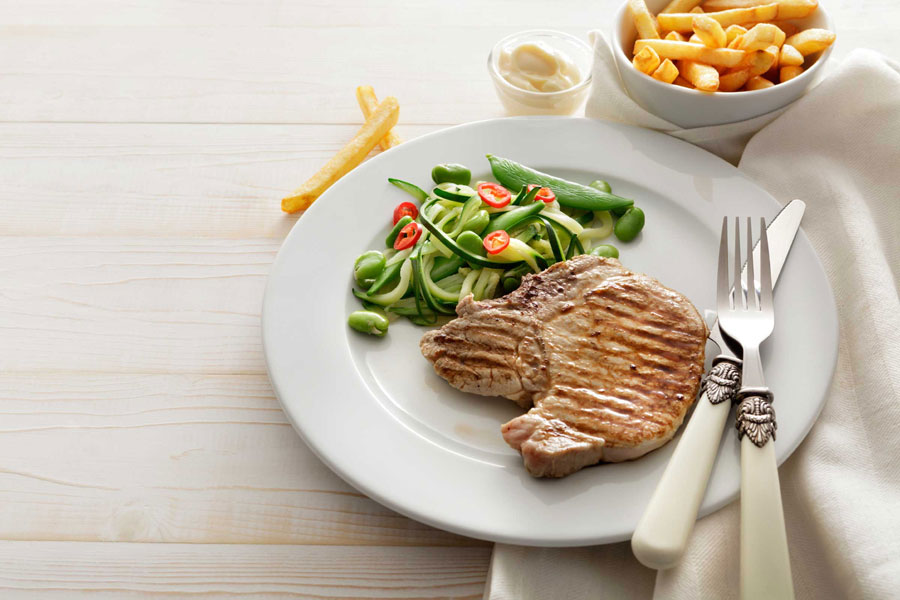
Below is a list of all the very important topics we'll discuss throughout the weight management content section. Members receive full access to the weight management content (and all of the WF website). In addition, sample topics are provided FREE for non-members. Please refer to the chart below.
Since the WF fitness and weightloss program you are about to embark on is going to stay with you for life ,you need to key in taste and variety. WF team has put together hundred and fifty tips and tricks to get you on track and to keep you there.
When you Shop
1.Plan your food shopping in advance, keeping in mind what you are going to need in your quest for fat and calorie-control. Then stick to that list.
2. Avoid impulse buying which is more likely if you have the wherewithal to pay for those impulse purchases/if you shop for food when you are hungry/if you shop when you are too tired to think smart on your feet. Impulse buying is likely to load your shopping basket with foods you never intended to buy, and many of them are likely to be poor choices nutritionally.
3. Read food labels and choose those foods that are lower in fat and saturated fat. ( You need to be aware of the sources of saturated fats in foods ).
4. Buy low-fat versions of dairy products such as skin milk.
5. Watch out for labels that say "Reduced fat" or "Lower fat" (rather than "Low fat"). Reduced or lower fat does not automatically means low-fat. These terms only tell you that the shelf product contains less fat than the original one-and that does not tell you much. The fat calories may have been "reduced" from 88% to 85% -but the food is still high-fat!
6. Be wary of "health food" traps. Tofu, for instance, is high in fat: soyabeans, after all, contain oil.
7. Consider fish and poultry as alternative to red meat; they are someone lower in saturated fat.
8. Most store-stocked salad dressings are primarily fat, with most of it coming from oil. Some also contain eggs, cream and cheese. A fat-free dressing will usually list water as its first ingredient, followed by vinegar, sugar in one of its forms (e.g. corn syrup), spices, and sometimes lemon juice or tomato paste.
9. Ground chicken can contain both light and dark meat, as well as skin and fat-and more than half of its calorie could well come from fat. To ensure the ground chicken you eat is low in fat, buy lean, skinless portions and grind the meat at home yourself.
10. Cottage cheese stands alone in the category of natural cheeses that get less than 20% of their calories from fat. Among regular high-fat cheese (over 70% calories from fat) are cream cheese (88%); neufchatel (81%); brie (75%); cheddar (74%); and blue cheese (73%).
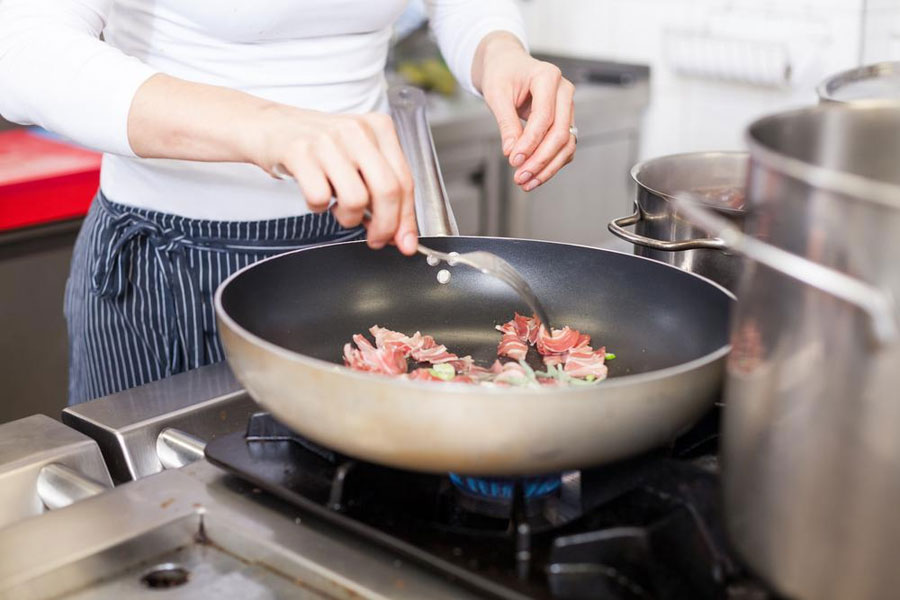
Fat Trimming Tools
11. Non-Stick Cookware: If you have ever been guilty of attempted weight loss you will know that one of the prime accessories after the fact (that you failed) is that old-fashioned frying pain which allowed your food to have a gay old time absorbing a great deal of oil and delivering it straight to your hips. In contrast, a non-stick pans allows you to cook food using just a thin film oil. For instance, instead of coating a chicken breast with batter and frying it (which can double the fat), saute it in a non-stick fry pan and you can virtually eliminate the fat.
12. Pressure Cooker: By making healthful cooking a matter of convenience, the pressure cooker makes a practical contribution to your weight-loss effort. Dried beans that normally take an hour and a half, for instance, are done in 10 to 15 minutes, rice in less than 10 minutes compared to the usual 45.
13. Blender: Use it to make contemporary low-fat smoothies that centre around skim milk (or buttermilk) and fruits. Try, for instance, this breakfast-on-the-run: a banana, a cup of buttermilk, a teaspoon of vanilla and a pinch of sugar if you must. Top with chopped dry fruits or with fresh fruit of the season.
14. Roasting Rack: Its fat-cutting favour works on the simple principle that, as meat or poultry roasts upon an elevated rack, the fat drips into a pan below, leaving the roast with less fat than if it were allowed to sit around in its own grease.
15. Skewers: It allows you to exercise instant fat and portion control. Your meal-on-a-stick can contain a few juicy bites of meat or fish while its bulk is made up of colorful vegetables-capsicum, cherry, tomatoes, onion, quarters, corn.
16. Steamers: It allow you to retain more nutrients than when you boil foods in water.
17. A Cheese Grater: It will help you to measure out judicious amount of cheese, the most popular varieties of which can contain as much-or-more-fat as well-marbled red meat. The grater should also incorporate a slicer that will make ultra-thin cheese slices with less fuss than a knife.
18. A food scale: It takes the guess-work out of weighing ingredients.
19. Spice and Condiment Tools: Any seasoned cook knows that a little flavoring goes a long way.
20. A Food Diary: An invaluable aid to weight control. At the outset, list the foods you have eaten over three typical consecutive days (preferably including one of the weekend days). Make sure you put down all the nibbles and guzzles and all the spoonfuls of tasting you may have done in the kitchen. Make your entries everyday. Don't trust your memory: If you tried today, could you remember everything you ate three days ago, and in what amounts? If possible make a note of when you ate and what you were feeling and/or doing at that time .A food diary will let you see at a glance the major stumbling blocks in your weight loss effort -deep fried foods, rich sauces and salad dressings .
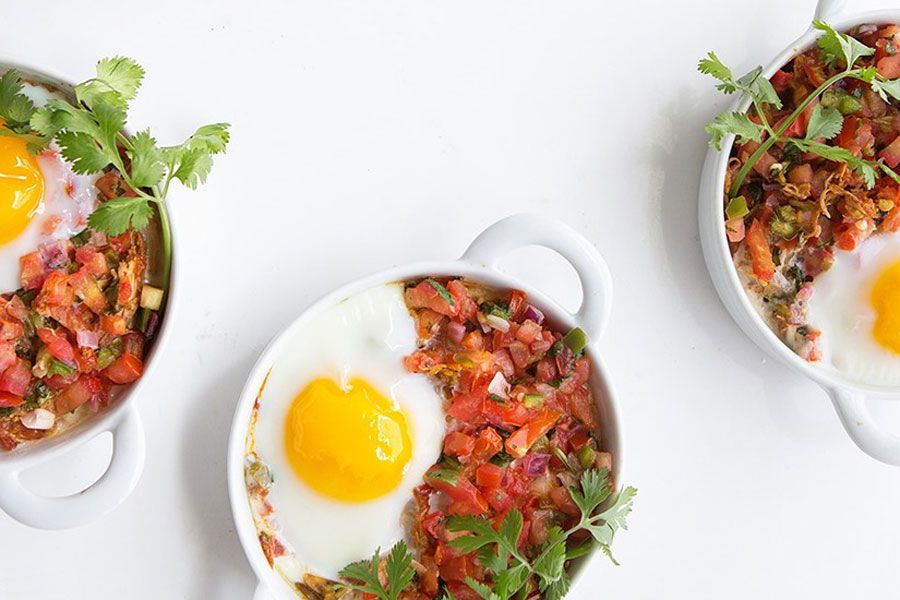
Cooking Light
21. Bake, roast, poach, steam, boil or grill foods instead of frying them. Or try stir-frying, with very little fat, using a non-stick wok.
22. Wherever possible, avoid using butter, lard and other sources of saturated fat. Replace them with small amounts of unsaturated fats (e.g. vegetables, oils such as corn oil, groundnut oil, safflower oil, sunflower oil or olive oil).
23. Saute meat or vegetables in broth, fruit juice, wine or Worcestershire sauce, instead of oil.
24. Nix one-fourth to one-third of the oil, butter or margarine in most conventional recipes. It won't affect the flavor of the food.
25. Make sure the oil is sufficiently hot before you put in food for frying. Cold oil tends to soak into the food.
26. Try lemon juice, vinegar, herbs or spices to season foods instead of butter or margarine.
27. Brinjal (Egg plant) absorbs more oil in cooking than any other vegetable-four times as much in deep-frying as potatoes. Try baking or steaming it instead.
28. Shred or grate cheese whenever possible. It helps a little cheese go a lot further.
29. Rinse regular cottage cheese by placing it in a strainer under cold running water. This removes a considerable amount of cheese's fat (as well as some of the sodium).
30. Add a rich "meaty" flavour to a vegetarian stew without upping the fat or cholesterol by adding two tablespoons of unsweetened cocoa powder to the pot.
31. Bake, rather than deep-frying, onion rings for, say, a steak accompaniment.
32. Toast, rather than frying, bread cubes for croutons.
33. Make a creamy but low-fat blend for mashed potatoes, using a puree of equal proportions of low-fat cottage cheese and skim milk.
34. Use skim milk (and less sugar) in puddings.
35. Use low-fat curds or low-fat sour cream when sour cream is called for.
36. Replace one whole egg with two egg whites in recipes for cookies, cakes and shortbreads. The fat (and cholesterol) are in the yolk, not in the white.
37. Include sweet spices such as cinnamon and all-spice to make up for the flavour that is lost when fat is reduced. Grated orange rind perks up flavour, too.
38. Use fruit juice instead of some of the fat in cakes.
39. Replace whole milk with low-fat or skim milk.
40. Make single-crust pies: for instance, try a crust made with 1 cup of cream-cracker crumbs and 3 tablespoons of soft margarine.
41. Make soft drop cookies; they generally contain less fat than rolled cookies
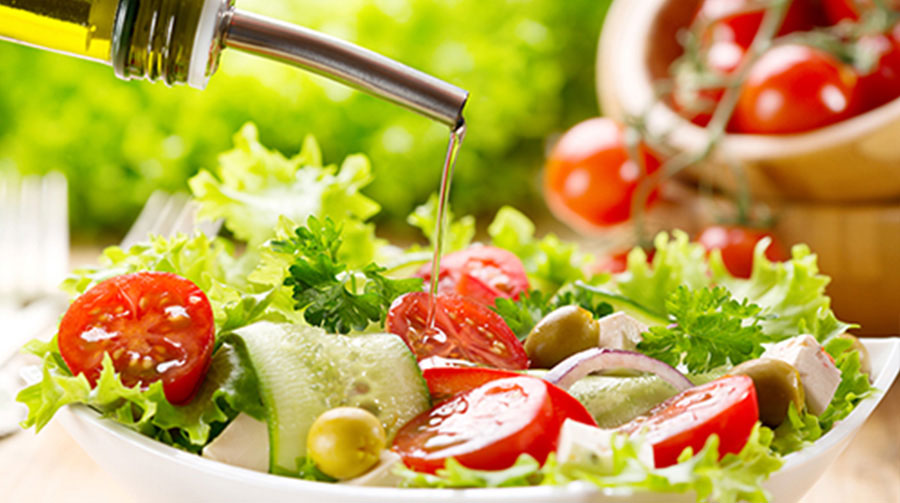
Dressings
Here are tips on how to dress down
your salads :
42. Give that old Vinaigrette a
new, slim look by altering proportions. Instead of the traditional
three-to-one ration of oil to vinegar, try a one-to-one ration or even
lower say, one part oil to two parts vinegar. You will get around 30
calories per tablespoon instead of the 90 you get in the standard
version.
43. For a creamy, thick texture in dressings and dips, substitute sour cream and mayonnaise with pureed non-fat cottage cheese or low-fat cream , low-fat yogurt, skim milk or buttermilk as a base. Flavor with herbs and spices.
44. You can also slim down your dressing by stretching it with de-fatted stock, wine, honey or fruit juice.
45. Go all the way--- with a non-oil dressing. for instance, vinegar blended with mustard and apple juice--terrific with cabbage, cauliflower and carrot salads.
46. Prepared low-calorie salad dressings are available at the health-food stores.
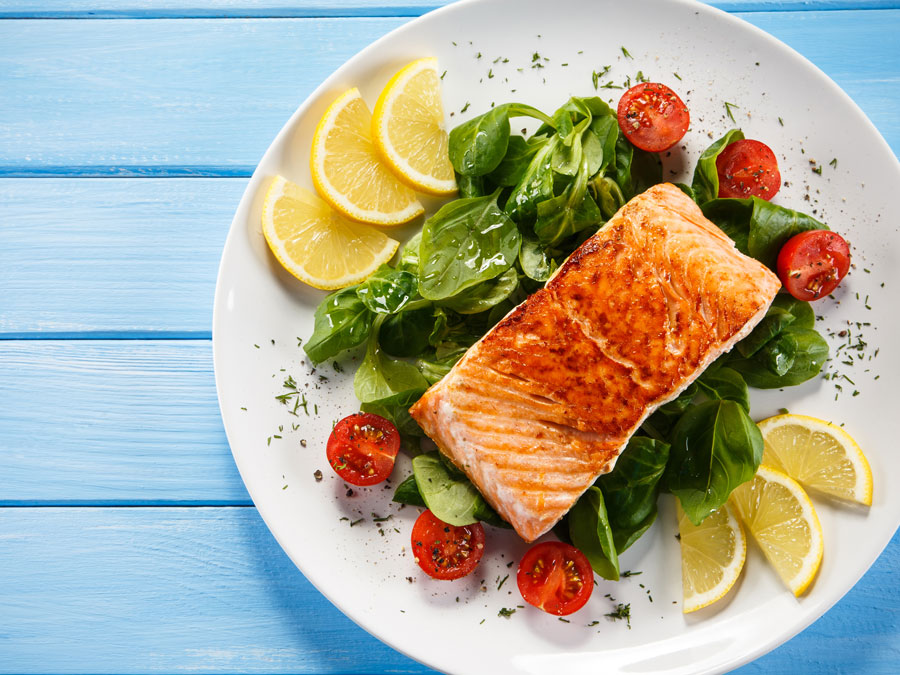
Marinades
47. Skewer small cubes of skinless chicken that have been rubbed with chopped lemon grass, garlic and a bit a salt. This is so flavorful, you won't even stop to remember how healthful it is.
48. Another spice rub for skinless chicken or for fish fillets: Combine and grind 2 tablespoons of peppercorns with 3 tablespoons each of coriander seeds and cumin seed. Then add 3 tablespoons of red chilli powder, 2 tablespoon of ginger powder and 1 tablespoon of curry powder. Grind till blended, rub on chicken or fish and grill.
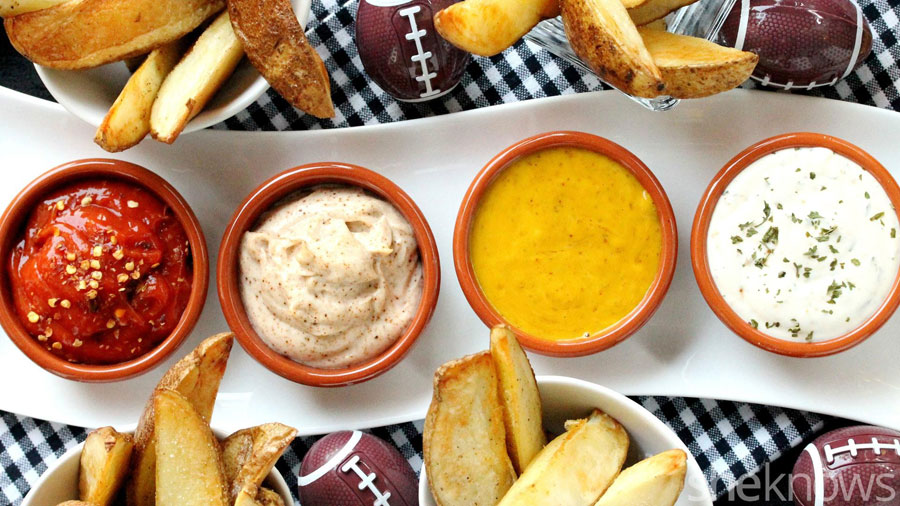
Sauces & Dips
49. Use skim milk when making "cream" sauces.
50. Sub for a classic white sauce with a puree of low-fat cottage cheese, thinned with skim milk and mixed with sauteed onion and garlic.
51. Instead of mayonnaise-heavy tartar sauce for fish, try pureed cooked red peppers.
52. For grilled fish fillets, black bean sauce makes a light accompaniment.
53. A mint sauce (mint, vinegar and sugar) is a tangy but fat-free accompaniment for hot mutton roast.
54. Alfredo sauce is not the only thing with which to toss pasta. What a pasta sauce calls for is something that will coat the noodles while adding flavor to the dish. Tomatoes alone can do the trick; and they really come alive when the are paired with ingredients like fresh, chopped, garlic, basil, roasted red peppers balsamic vinegar.
55. Another substitute for cream sauce for pasta: White beans (or other beans) pureed with chicken stock and seasoned with herbs of your choice.
56. Beans can also give a dip a creamy texture without the fat. One hors doeuvres creation to try: Kidney beans pureed with garlic, red chilly powder, powdered cumin seed, lime juice, olive oil and salsa; stir in chopped onion and coriander leaves.
57. Make a guilt-free dip for crudites by beating in a few tablespoons of chopped spring onions into a cup of yogurt cheese.
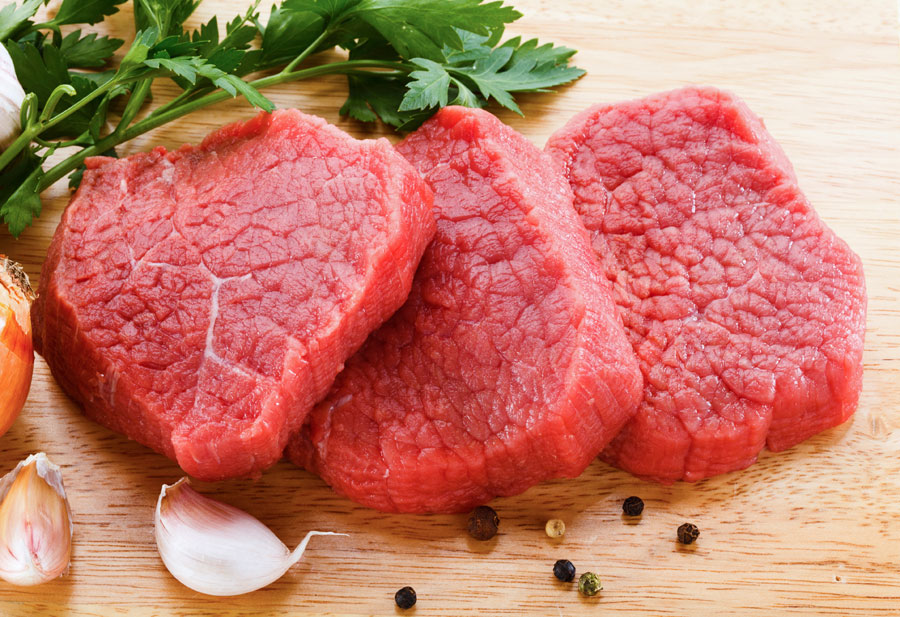
Red Meat
58. When buying , select the lean cuts-eye of round, top round, top sirloin, round tip, top loin, tenderloin, flank steak, T-bone (That's right-any name tagged with "round" or "loin"; they come from the lean, muscular parts of the animal.)
59. If "round" or "loin" are Greek to you and your butcher, eye ball the colour of the meat-pick the meat with the reddest, appearance and the least fat in the muscle.
60. Limit your intake of processed meats such as sausages and luncheon meats. They are usually high in both, fat and sodium.
61. It's hard to tell how much fat there is in mince. Even mince which looks quite red can be very fatty. But you can remove most of the fat: Cover the mince with water and boil for about 5 minutes. Remove the mince from the head and let it stand for a minute or two. The fat will float to the surface. You can now pour off most of the fat and cook the mince immediately in the usual way.
62. While preparing meat, trim visible fat from the outside and in the seams before you cook it.
63. Marinate in lime juice, wine and vinegar, or in not-fat curd.
64. Baste meats with broth, tomato, juice or fruit juice, instead of with fatty drippings.
65. Use buttermilk instead of butter to prepare a gravy for, say, beef stroganoff.
66. Try using less meat in a dish, and bulking it up instead with beans or vegetables.
67. Pick a serving of steak with a side-bar of sauteed vegetables, rather than French fries.
68. Let a meat gravy dish stand for a few minutes after it is cooked so that the fat floats to the top; then spoon it off.
69. Even better, refrigerate the dish to congeal the fat, then skim it off. (You can thicken the gravy with flour if you add a little at a time.)
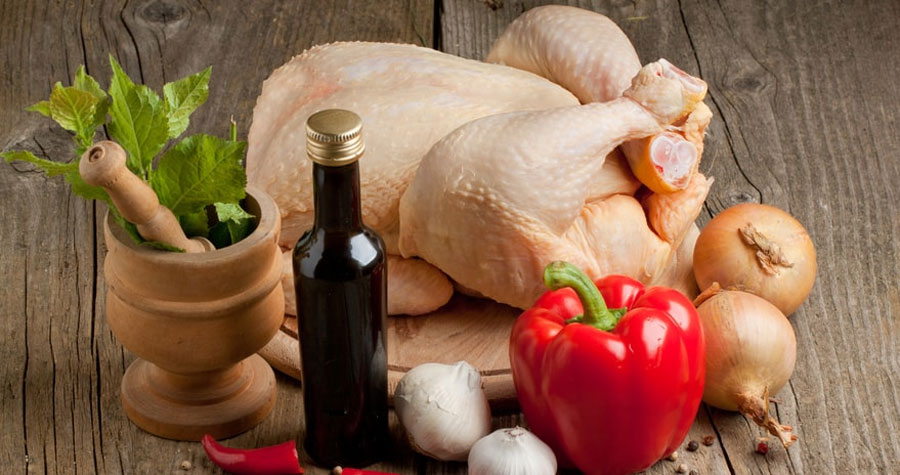
Poultry
70. Poultry skin is almost pure fat, mostly saturated. Chicken eaten with the skin can be as high in fat as fatty cuts of beef. By removing skin from chicken and trimming all visible fat, you will get about half the fat.
71. The dark meat of chicken is about twice as high in fat as the light meat. Chicken breast is the leanest part of the chicken.
72. But if you fry chicken to a crunch or make it sopping in a cream sauce, you will get in more calories and more fat than you would from roasted pork tenderloin. It is what you do with the chicken, lean and skinless as it may be, that makes the vital difference.
73. Except for deep-frying , other methods of cooking chicken are good low-fat approaches-roasting, baking, poaching, grilling (even a stir-trying if minimal fat is used). Of all the methods, roasting a whole bird at room temperature melts away the most fat. Use a roasting rack so that the fat can drip into a tray and be discarded.
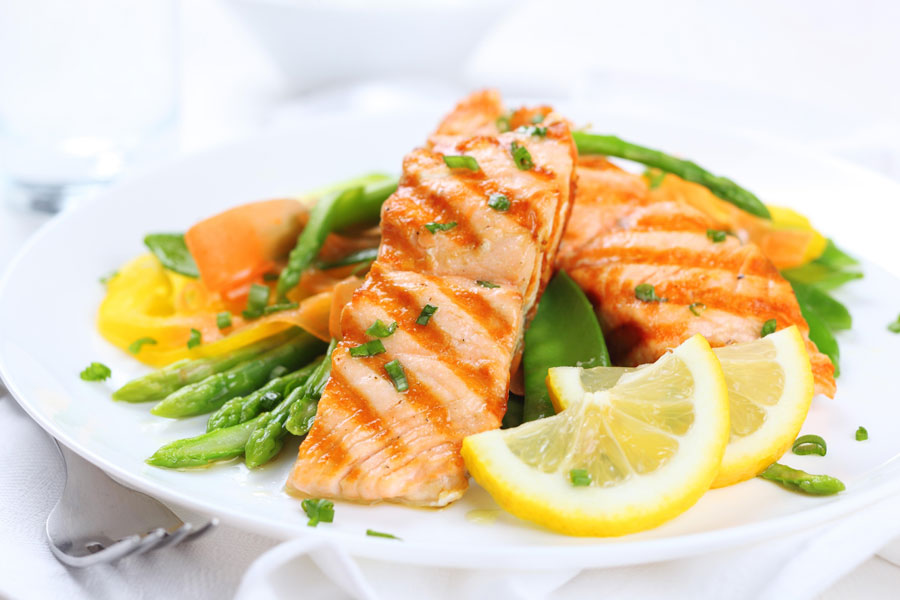
Fish
74. Grill, steam or bake fish rather than having it deep-fried in batter.
75. Similarly, avoid breading fish before frying. The crumbs tend to soak up the cooking oil like a sponge.
76. If you are buying tinned fish, pick the one packed in water rather than in oil .
77. Use lemon instead of tartar sauce; avoid creamy and buttery sauces.
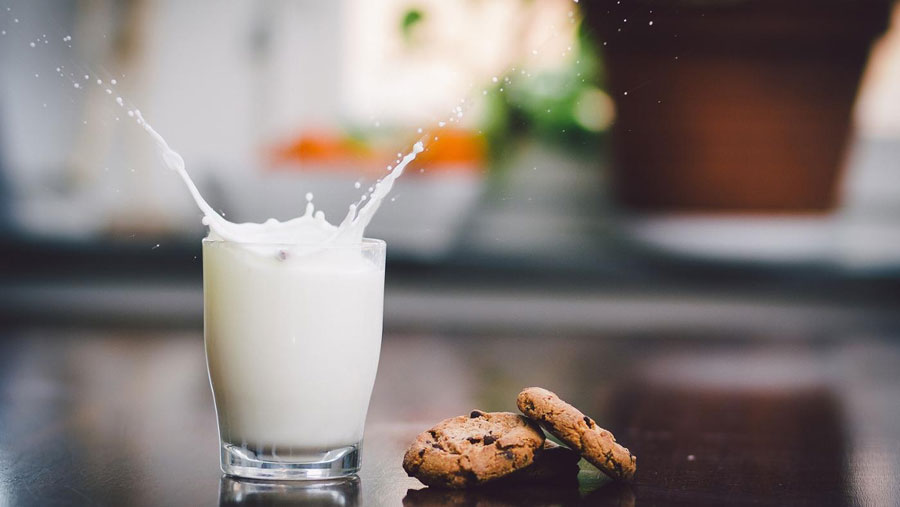
Reducing Calories ,Without Losing Out Vitamins and Minerals
Here are few suggestions to choose
and prepare foods in a way to reduce calories and preserve the important
nutrients .
78. A prime example: 1 cup of skim milk has about the same amount of calcium as 1 cup of whole milk but only traces of fat and half the calories.
79. The flip side of that first guidelines is this-those foods that bring in mostly calories and little else must be the first you hack away at.
80. Watch for the hidden sugars in ready foods. Some breakfast cereals have such high amounts of sugar in its various forms that sugar is virtually the second, if not the first, ingredients in the product. Yet, even health saboteurs like chocolate-coated cornflakes imply that they constitute a nutritious breakfast.
81. Sugar is the chief additive in processed foods. A food label might list sugar in its many avatars; not only "sugar", but also corn sugar, brown sugar, honey, corn syrup, caramel, molasses, dextrin, dextrose, fructose, glucose, maltose, lactose, sucrose. If any of the ingredients appears high up in the listing you will know the product is high in sugar.
82. Use sugar substitutes-sweeteners-to sweeten puddings, fruit punches, jellies, yogurt, frozen milk desserts and many other preparations. However, moderate their use. Some of these still have question-marks regarding safety hanging over them.
83. Reduce sugar when baking. A half-cup of sugar per cent of flour in cakes is sufficient if you add more flavoring such as vanilla.
84. Honey has been elevated to a nutritional pedestal for no deserving reason. It brings in as much " empty" sugar as table sugar. It does contain infinitesimally higher amounts of iron, phosphorus and fibre, but so infinitesimally so that they are virtually negligible.
85. Other foods that bring in a lot of calories and little else include fatty spreads and dressings such as butter and margarine: sugary foods such as soft drinks, candy, candy ices, jams, alcohol.
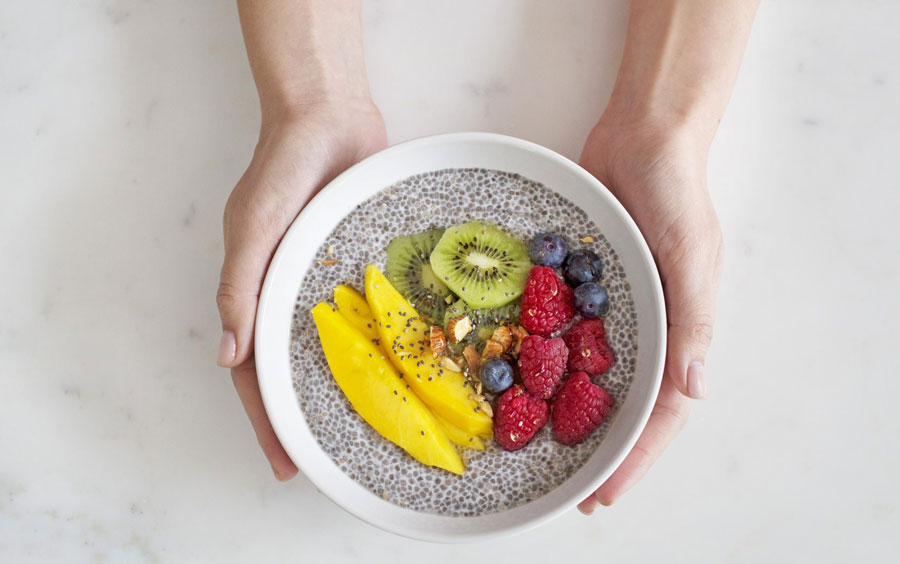
Fill Up The Fiber
Below are few tips to add fiber to
your diet without loading up extra calories:
86. Sprinkle bran on soups, on sandwiches, on sliced fruit....on just about anything your imagination and inclination suggest.
87. Make chappattis, pancakes, cakes and muffins with whole wheat flour.
88. Try a wholegrain breakfast cereal. It does not have to be 100 per cent bran.
89. Buy baked goods made with whole grains such as rye breads, crack-wheat bread or oatmeal muffins.
90. Add cooked dry beans, peas or lentils to your favourite soups, curries, stir-fries and salads.
91. Eat fruits and vegetables with their peels: guavas, apples, peaches, sapota, tomatoes, potatoes, cucumber.
92. Eat fresh fruit or stewed fruit, instead of drinking fruit juice.
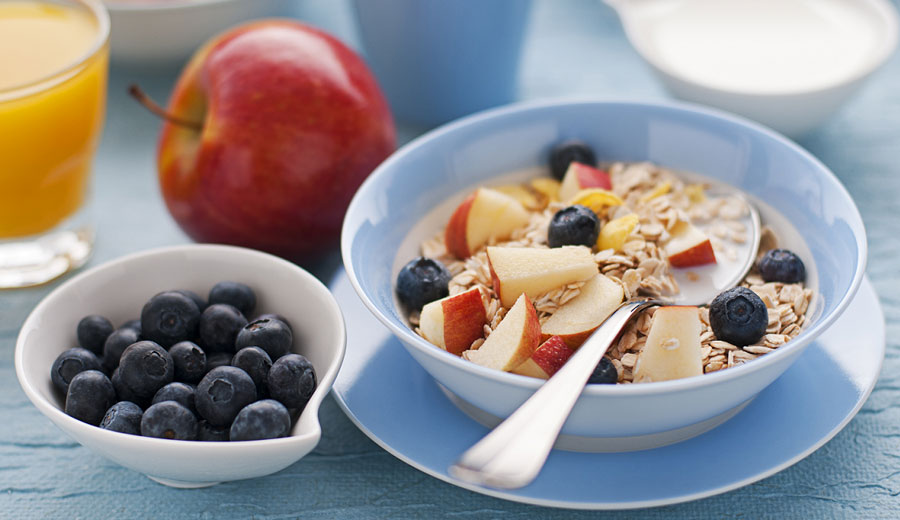
At the Table
93. Don't skip breakfast, It will only induce mid-morning cravings which you will try to satisfy with anything that's on hand-greasy burgers, samosas, chocolate, whatever.
94. Add vegetables, capsicum, mushrooms ,onions to an egg-white omelet ,instead of ham or cheese.
95. Be aware that both margarine and butter have the same amount of fat, though margarine, being made from vegetables oils, has no cholesterol. If you must use one or the other, however, prefer the soft margarine that comes in a tub because it has less saturated fat than butter.
96. Better choices at the breakfast table are to spread your bread or toast thinly with an all-fruit preserve or a low-fat cheese-based spread you can make at home, flavoring it according to your choice.
97. Watch for the fat traps at the dining table: pickles in oil, avocados, coffee, whiteners (usually high in saturated fat, sneaking in as "hydrogenated vegetable fat")
98. Starting a main meal with a soup fills you up and takes the edge off your appetite at the cost of just a few calories. But we are talking here of light clear soups-not something like vichyssoise which relies for its flavor on the heavy contribution of butter and cream.
99. If you want soup with a creamy texture without using cream give it body by pureeing low-fat cheese, vegetables, starches, milk and seasonings.
100. Another good idea for starters is a garden salad (with a light dressing). If you fill up vegetables, you will eat less of the more calorie-packed items on the table.
101. Even a glass of water before a meal can help you eat a little less.
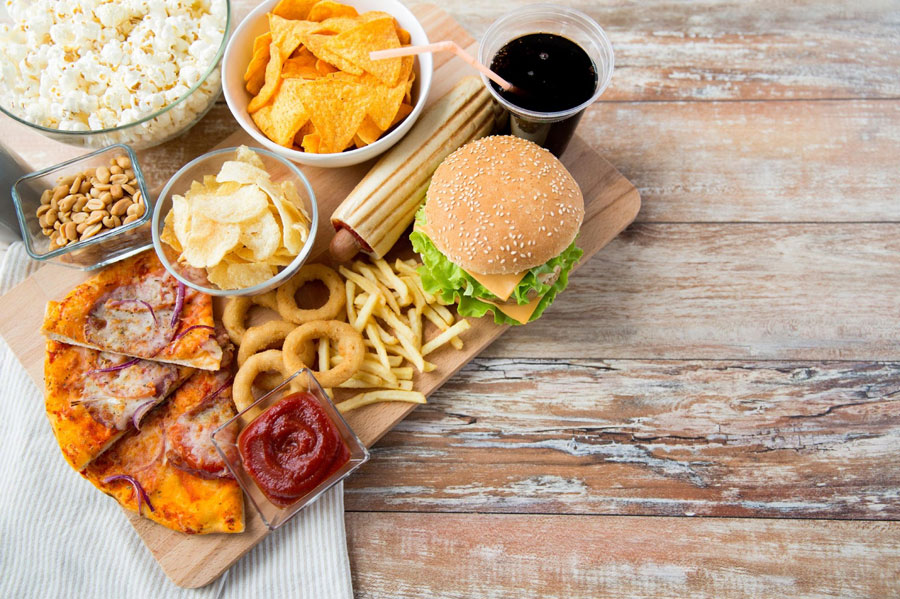
Snack Right
102. Snacks are not forbidden. But be aware that some kind of snacks can shovel in calories insidiously. Fresh fruit, vegetable sticks, rice cakes, corn-on-the cob, are smarter snack choices than wafers, cake, mithai and bhajia.
103. Slim down tuna or chicken-salad sandwiches by replacing the mayonnaise with low-fat yogurt.
104. In other kinds of sandwiches, choose mustard over mayonnaise.
105. Bulk up sandwiches by using as much of tomatoes, lettuce, cucumbers and onions as you like.
106. Blot the grease on the top of a pizza with a napkin-you will eliminate up to half a teaspoon of fat per.
107. If you must shovel in nuts while gawking at the TV, make it nuts in their shells. The more time you spend shelling them, the less nuts you will eat.
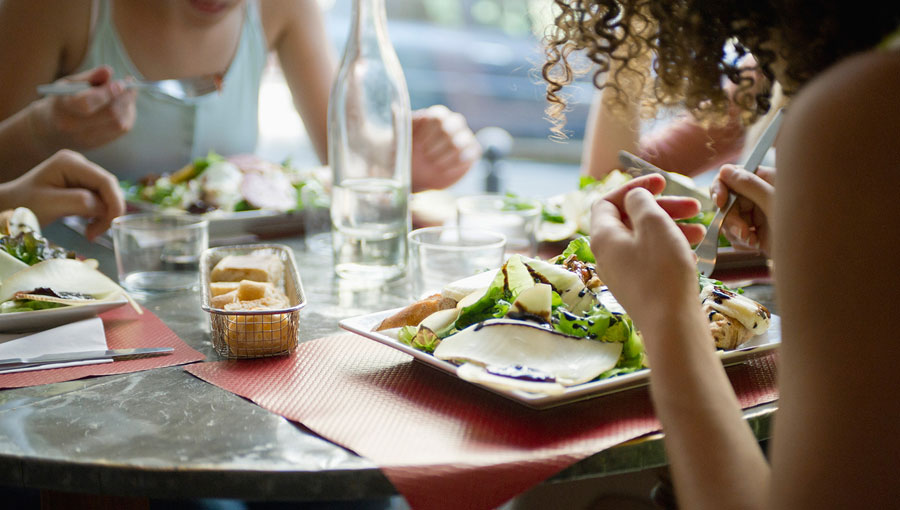
Eating Out
108. Beware of guilt when you visit or party with well-meaning relatives and friends. It is still customary for many people to equate how much you eat with how much you love them or how much you appreciate their culinary efforts.
109. At parties, exercise control over alcohol. Drinking is often paired with social occasions where higher-fat foods are often available.
110. In a restaurant, ask the waiter for low-fat menu suggestions, or ask him to consult the chef on what alterations can be made to a typical dish.
111. An aperitif is, by definition, an alcoholic appetizer, but since you are turning eating conventions on their head anyway, what's one more? Instead of a beer or wine, have a jal jeera, nimbu pani or coconut milk.
112. Restaurants offering all-you-can-eat thalis (indian version for plates) and buffets tempt you to eat all too much.
113. Buffets also offer you no option to order foods prepared the way you like.
114. Names in a menu listing can be misleading. "Macaroni salad" sounds healthful enough, but it is made with mayonnaise and if you don't know that, you could end up with an unhappy choice. Other salads that come with greasy dressings are potato, coleslaw and pasta salads.
115. As a rule of thumb, choose grilled, broiled, poached or steamed foods: avoid creamed, buttered, fried foods, or those with a cheese sauce.
116. The "Chef's Special" is almost always a fat trap.
117. When reading menus, watch out for these terms, which are giveaways to fatty foods.
118. Request that added fats, such as salad dressings, sauces, and coconut chutneys be left off or put on the side.
119. And if it's a rich blend, such as blue cheese dressing (90 calories a tablespoon), use a teaspoon, not a tablespoon, to flavour up.
120. Better still, dip your fork into it before taking a bite.
121. Ask whether side-bars can be changed from French fries to steamed vegetables, for instance.
122. Choose tomato-based sauces and soups, instead of cream based soups like vichyssoise or soups topped with cheese such as French Onion Soup. Clear soup are the best.
123. A few Indian restaurants offer salad bars where you can put together your own salad from a range of ingredients. Just watch it will the dressing, and with toppings like croutons and cheese.
124. Prefer plain broiled fish to batter-fried.
125. Choose vegetable toppings for pizza instead of extra cheese.
126. Ask that foods made in oil or butter be sauteed in wine instead.
127. If you are going to an ethnic catery, you should be at least moderately acquainted with the particular cuisine. If you are not, do ask what menu names or description mean. Some can be red signals for fat. On a French menu, for instance, anything prepared remoulade refers to a mayonnaise sauce.
128. In a Chinese restaurant, whole steamed fish with sauce on the side is good choice. Simple stir-fries are also fine, except that most Chinese eateries in India use too much oil in the stir-fries.
129. Low-fat Thai fare includes lemon grass soups; stir-fried noodles and sprouts; lightly sauteed meats. Avoid the coconut based soups and curries, or deep-fried offerings like royal tofu and peanut sauce.
130. Pick you way carefully through a Mexican menu. Gazpacho, grilled meats or seafood, chicken fajitas, black beans soup, plain corn tortillas with a salsa dip, soft chicken tacos or beans in a soft tortilla are among the wiser options.
131. A French restaurant can always dish up fish grille without butter even if it is not on the menu. Stews like ratatouille or bouillabaisse are okay. So are dishes with sauces labelled coulis.
132. In an Italian restaurant, good appetizers are minestrone soup, Cioppino (seafood soup), or steamed mussels in a red sauce. Pasta with a vegetable-or tomato-or wine based sauce is fine, so is pasta-e-fagioli, or spaghetti with marinara.
133. It the cuisine is Japanese, yakitori (meats grilled on a skewer) is a good choice as are sunomono (cucumber salad) and teriyaki.
134. When portion choices are available, order half portions: restaurant serving sizes generally weight down on the side of excess.
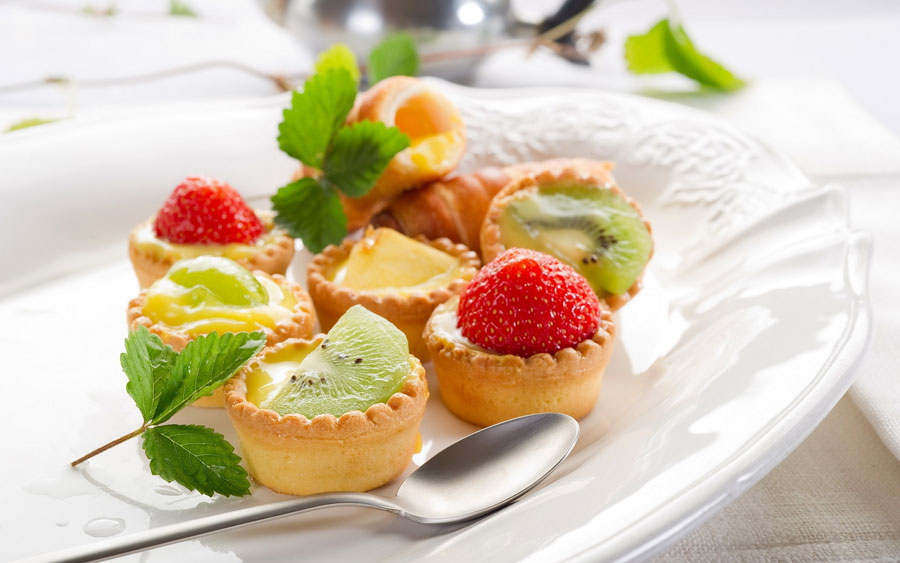
Desserts
135. If you have a choice, choose fruit based creations-something like a fruit sorbet or a fruit salad (minus the ice cream) over a cake or torte or pie. The latter often have crusts laden with butter, or are frequently crowned with rich creams or custards.
136. If a fruit-based dessert typically comes with a fat-rich topping such cream, creme fraiche or a chocolate sauce, request the topping on the side and spoon it on with a light touch.
137. Face-to-face with a seductive or other rich dessert, take a one-spoon or one-fork helping only.
138. If you really must have that creme brulee, go ahead and order it-but share it. Even the most elegant restaurant is used to seeing dessert being spooned into a relay of mouths.
139. When you do eat ice-cream, try regular varieties rather than the rich, super-premium types, which are invariable higher in fat.
140. Equally avoidable: what's know in Indian ice-cream parlous as "American Thick Milk Shake". The name says it all.
141. Ask about special low-fat-calorie offerings: perhaps there is a gelatin and sugarless fruit-based dessert choice for diabetics-and that is good for weight-watchers too.
142. Other low-fat options: desserts that rely on egg whites, such as meringue or angel food cake. Sherbets, ice milk or flavored ices also won't do you in.
143. Fresh berries are and excellent choice of dessert if you pass up the cream.
144. Don't get neurotic about menu alterations. You might get the waiter so harried that he will get the details wrong. Or you might offend the chef's sensibility if you order a meal that is so bland that is is unappetizing. Give him the basic guidelines, then let him use them as a challenge to his creativity.
145. Having made all those demands-and having had them acceded to -don't forget to tip generously or your special requests might not be met with such affability.
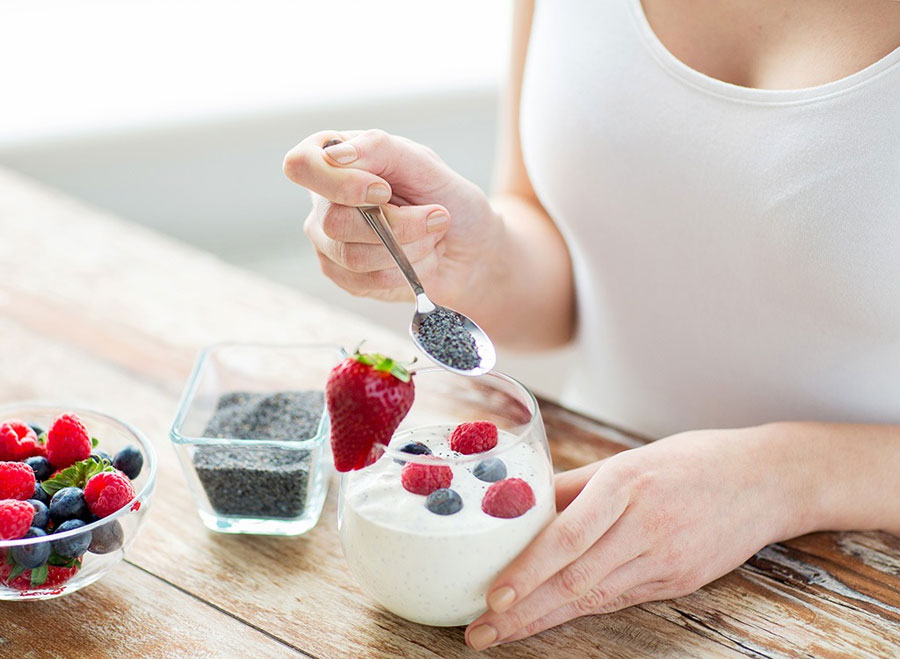
Mind Over Fatter
Develop a mind set towards
"healthy eating" and not "dieting".
146. Choose a weight-control plan that fits your food preferences. Low-fat yogurt and lime juice are good low-fat choices, but if your palate detests both, there are other equally good low-fat options.
147. Satisfy hunger cravings. But do it with a low-fat option like vegetable sticks or a slice of fruit, not with masala corn chips.
148. Don't Skip meals or you are likely to end up cheating yourself because you will negotiate with yourself. "I didn't have breakfast, so I have X or Y". And X or Y, if it is mid morning cheese pizza or a couple of samosas, can add up to more calories (and more fat calories) than a healthy breakfast would have brought in.
149. Use a smaller platter: Your plate will look full so you won't feel you are short-changing yourself, yet you will actually be eating less. It is simple trick-but it works.
150. Don't give up, give in.... a
little: If you love cheese or chocolate, don't vow never to let your
lips touch one again. You will hate yourself for being so
"weak" about these weaknesses, and then you will hate yourself
for succumbing to temptation as you almost inevitably will.
That's it ,above are hundred and
fifty tips to slim down the fat in your diet and help you achieve a
healthy weight .Now is the time to take action and pave a way towards a
healthy weight with these tips, good intentions and sturdy motivation .